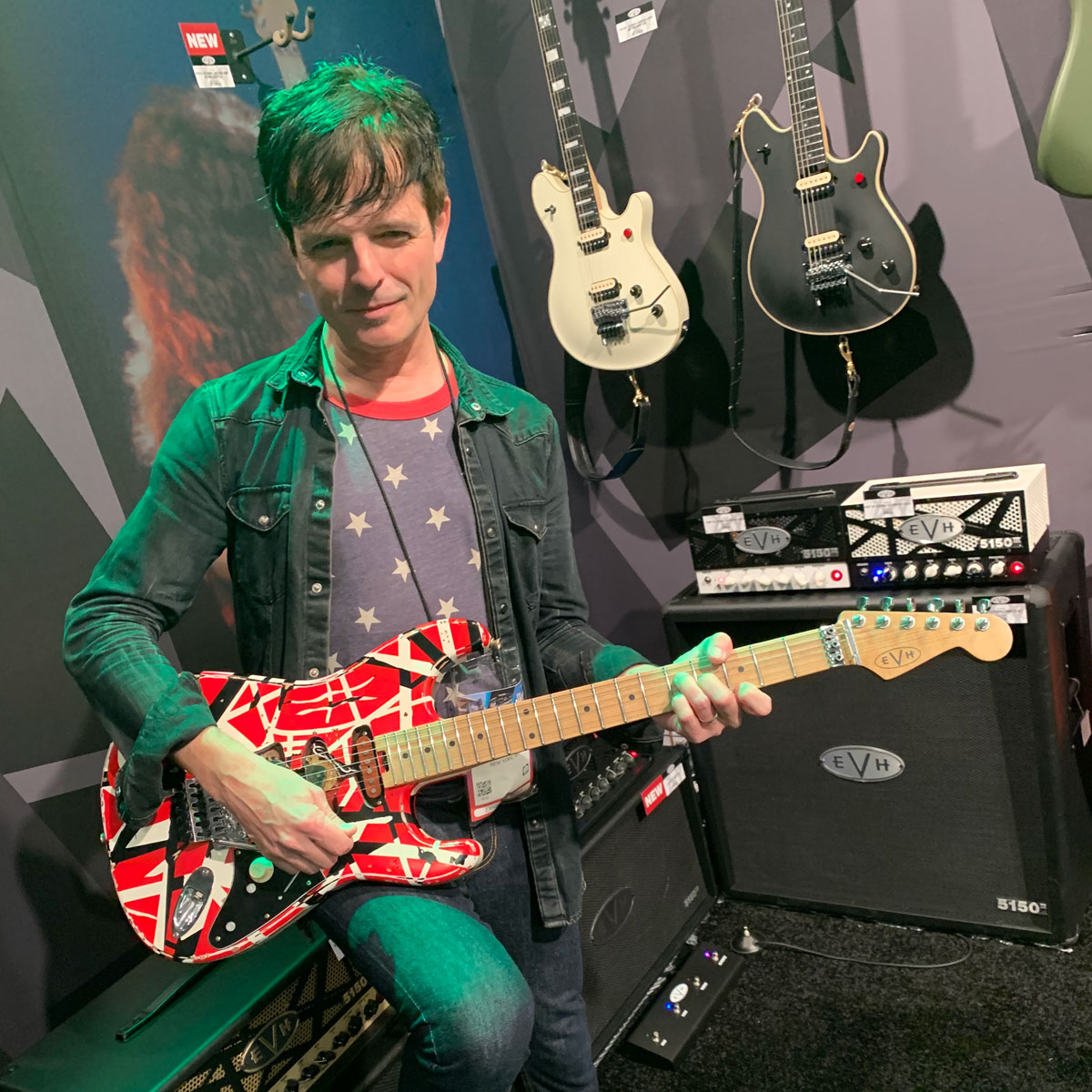Review: Bogner Ecstasy Blue and Red Preamp Pedals

The following content is related to the June 2013 issue of Guitar World. For the full range of interviews, features, tabs and more, pick up the new issue on newsstands now, or in our online store.
Since the early Nineties, Reinhold Bogner’s Ecstasy and Uberschall amps have played significant roles in modern guitar tone, having been heard on hundreds of influential recordings and seen on numerous concert stages.
Because Bogner amps were never inexpensive (these days an Ecstasy head sells for nearly $4,000), they’re rarely seen outside of professional rigs or studios. Fortunately, in recent years, the company has developed new products that make its signature tones more accessible to the masses.
This year, the amp maker released a new line of pedals that provide many of the distinctive sounds and innovative features of Bogner amps in affordable stomp-box packages. The lineup currently consists of three pedals—the Ecstasy Blue, Ecstasy Red and high-gain Uberschall—that deliver a wide range of incredible tones, from vintage crunch to harmonically complex distortion.
Each pedal costs about the same as a decent boutique overdrive, which means that guitarists can get all three for a mere fraction of the price of a Bogner amp. For this review, I tried out both Ecstasy pedals to compare their contrasting sonic personalities.
Features
The Ecstasy Blue and Ecstasy Red are based on separate channels found on the Bogner Ecstasy amp. Although they both have virtually identical features, the Blue pedal provides crunch similar to a “Plexi” Marshall along with the crush of a later JCM-style amp, while the Red’s tone is warmer and fatter, with considerably more gain on hand. Both pedals have amp-like controls consisting of volume, gain, treble, middle and bass, along with Bogner’s unique Variac on/off, Pre EQ b1/n/b2 and Structure 101/100/20th switches (representing the 101, 100 and 20th Anniversary Ecstasy models). The Blue pedal also provides a Plexi/Blue mode switch, while the Red has a three-position mode switch with Tight, Mellow and Full settings. In addition, both pedals feature a Boost mode, complete with its own footswitch with miniature volume and gain controls.
All the latest guitar news, interviews, lessons, reviews, deals and more, direct to your inbox!
Both pedals operate on a nine-volt battery or with a nine-volt DC/100mA adapter, which will be a relief to anyone using a multi-unit power supply and coping with today’s increasingly current-hungry devices. A 1/4-inch remote jack enables a remote controller to turn the effect and boost functions on or off, allowing users to mount the pedals in a rack.
Performance
Because the Ecstasy Blue and Red are almost like amps unto themselves, it’s best to use them with amps that are dialed in to clean tones instead of an amp that’s already overdriven or distorted. I found that the Blue pedal sounded best with Fender Bassman and Twin, Hiwatt, Krank, and VHT amps. It was less of an ideal match with Marshalls and Voxes, which already cover similar sonic territory. The Red pedal is compatible with a wider variety of amps.
Both pedals deliver a wide range of tones and textures, from clean overdrive boost to sizzling distortion. The Blue pedal’s Plexi mode emphasizes upper-midrange frequencies and absolutely nails classic EVH and AC/DC tones, and the Blue mode tames the treble slightly while boosting lower mids. The Red pedal is much more aggressive, producing everything from smooth, singing compressed high-gain tones in Mid mode to raunchy, speaker-ripping rhythms in Full mode, while Tight mode provides the detailed, focused bottom end essential for modern metal tones. On both pedals, the Variac mode drops output level slightly while producing a looser, spongier feel. The Pre EQ boosts treble at the b1 setting or midrange and highs at the b2 setting, while the n setting is neutral. The Structure 101/100/20th switch changes the overall feel. The 101 setting produces loose, Tweed tones that respond well to dynamics; 100 offers focused midrange and a tighter attack; and 20th delivers modern personality with harmonically complex mids and highs.
The EQ controls are very reactive and cover a wide sonic range without ever sounding artificial or unmusical. Considering all the switching options, it can take a while to dial in a particular sound that you have in mind, but along the way, you’re likely to discover satisfying tones you may not have considered before. The best feature of both pedals is that anyone can dial in his or her own signature tones with them, and, unlike other stomp boxes, sound different from other players using the same pedal.
Cheat Sheet
List Price $349.99 (each)
Manufacturer
Bogner Amplification, bogneramplification.com
Both pedals are configured like standalone amp channels, with volume, gain and three-band EQ controls.
The Boost mode features its own footswitch and separate volume and gain controls, allowing it to operate almost like a separate channel.
The Mode switch alters the tonal personality and well as the gain structure, providing vintage and modern textures.
The Structure 101/100/20th switch allows guitarists to modify the pedal’s dynamic response and tonal personality to sculpt the sound with even greater detail.
The Bottom Line
Offering versatile performance and the sonic personality of separate channels in Bogner’s Ecstasy amp, the Bogner Ecstasy Blue and Ecstasy Red pedals provide an affordable gateway to Bogner’s coveted signature tones.
Paul Riario has been the tech/gear editor and online video presence for Guitar World for over 25 years. Paul is one of the few gear editors who has actually played and owned nearly all the original gear that most guitarists wax poetically about, and has survived this long by knowing every useless musical tidbit of classic rock, new wave, hair metal, grunge, and alternative genres. When Paul is not riding his road bike at any given moment, he remains a working musician, playing in two bands called SuperTrans Am and Radio Nashville.

